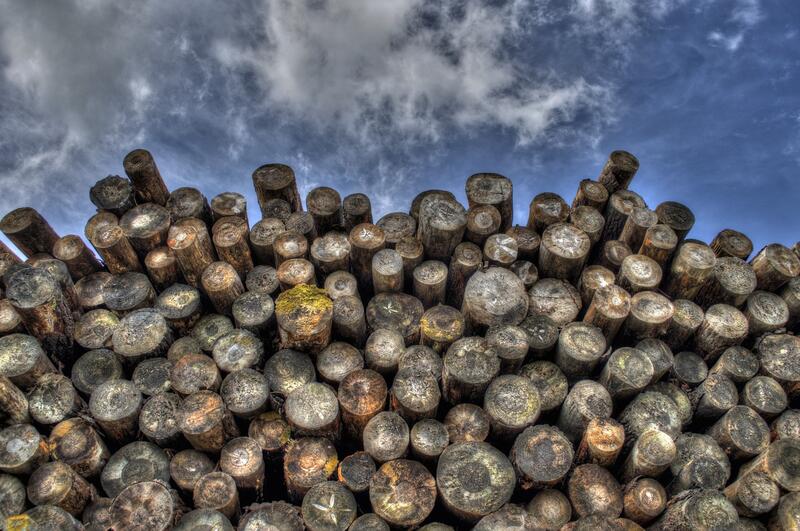Decarbonization in Support services to forestry: Strategies for a Greener Future
This article discusses decarbonization strategies for support services in forestry, emphasizing the need for a greener future and sustainable practices.

Forestry is an essential sector for the global economy, providing a range of products and services that are crucial for human well-being. However, the forestry sector is also a significant contributor to carbon emissions, which are a major driver of climate change. Decarbonisation in the support services to forestry sector is, therefore, a critical issue that needs to be addressed urgently. This article will explore what decarbonisation in the support services to forestry sector is, why it is important, the main sources of carbon emissions in the sector, how we can reduce carbon emissions, the challenges facing decarbonisation, and the implications of decarbonisation for the support services to forestry sector.
What is Decarbonisation in Support Services to Forestry Sector and Why is it Important?
Decarbonisation is the process of reducing carbon emissions to zero or near-zero levels. In the support services to forestry sector, decarbonisation involves reducing the carbon footprint of activities such as timber harvesting, forest management, and transportation of forest products. Decarbonisation is essential for several reasons. Firstly, carbon emissions from the forestry sector contribute to climate change, which is a global threat to human well-being. Secondly, decarbonisation can help to reduce the environmental impact of forestry activities, which can improve the sustainability of the sector. Thirdly, decarbonisation can also help to reduce the costs of forestry activities, which can make the sector more competitive and profitable.
What are the Main Sources of Carbon Emissions in Support Services to Forestry Sector?
The main sources of carbon emissions in the support services to forestry sector are:
- Timber harvesting: The use of heavy machinery such as harvesters and forwarders in timber harvesting activities emits carbon dioxide (CO2) and other greenhouse gases (GHGs).
- Forest management: Activities such as thinning, pruning, and fertilization emit GHGs, primarily through the use of fossil fuels in machinery and equipment.
- Transportation of forest products: The transportation of forest products such as timber, pulp, and paper emits GHGs, primarily through the use of fossil fuels in trucks, ships, and trains.
- Energy consumption: The energy consumption in the support services to forestry sector, such as heating and lighting in offices and facilities, also emits GHGs.
How Can We Reduce Carbon Emissions in Support Services to Forestry Sector?
There are several ways to reduce carbon emissions in the support services to forestry sector, including:
- Use of renewable energy: The use of renewable energy sources such as solar, wind, and hydroelectric power can reduce the carbon footprint of the sector.
- Use of low-carbon machinery and equipment: The use of low-carbon machinery and equipment such as electric harvesters and forwarders can reduce carbon emissions from timber harvesting activities.
- Sustainable forest management: Sustainable forest management practices such as reduced impact logging, reduced use of fertilizers, and reduced use of heavy machinery can reduce carbon emissions from forest management activities.
- Efficient transportation: The use of efficient transportation methods such as rail and water transport can reduce carbon emissions from the transportation of forest products.
- Energy efficiency: Improving energy efficiency in support services to forestry sector facilities can reduce carbon emissions from energy consumption.
What are the Challenges Facing Decarbonisation in Support Services to Forestry Sector?
There are several challenges facing decarbonisation in the support services to forestry sector, including:
- High costs: The transition to low-carbon technologies and practices can be expensive, and many forestry companies may not have the financial resources to make the necessary investments.
- Limited availability of low-carbon technologies: Some low-carbon technologies such as electric harvesters and forwarders are not widely available, which can make it difficult for forestry companies to adopt them.
- Lack of incentives: There may be a lack of incentives for forestry companies to decarbonize, especially in regions where there are no carbon pricing mechanisms or other policies to encourage decarbonisation.
- Limited knowledge and awareness: Many forestry companies may not have the knowledge or awareness of the benefits of decarbonisation or the available low-carbon technologies and practices.
What are the Implications of Decarbonisation for Support Services to Forestry Sector?
Decarbonisation has several implications for the support services to forestry sector, including:
- Improved sustainability: Decarbonisation can help to improve the sustainability of the forestry sector by reducing its environmental impact.
- Increased competitiveness: Decarbonisation can help to reduce the costs of forestry activities, which can make the sector more competitive and profitable.
- New business opportunities: Decarbonisation can create new business opportunities for forestry companies, such as the production of biofuels and other renewable products.
- Improved reputation: Decarbonisation can help to improve the reputation of forestry companies, which can be important for attracting customers and investors.
Conclusion
Decarbonisation in the support services to forestry sector is a critical issue that needs to be addressed urgently. The sector is a significant contributor to carbon emissions, which are a major driver of climate change. Decarbonisation can help to reduce the carbon footprint of activities such as timber harvesting, forest management, and transportation of forest products. However, there are several challenges facing decarbonisation, including high costs, limited availability of low-carbon technologies, lack of incentives, and limited knowledge and awareness. Despite these challenges, decarbonisation has several implications for the support services to forestry sector, including improved sustainability, increased competitiveness, new business opportunities, and improved reputation.